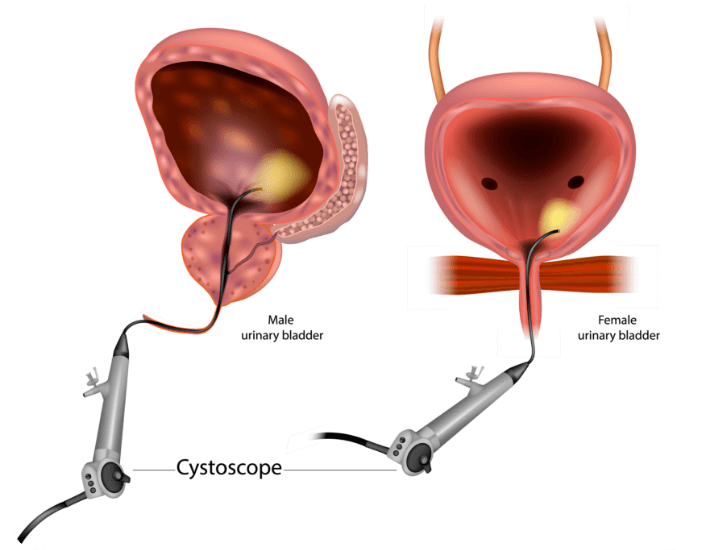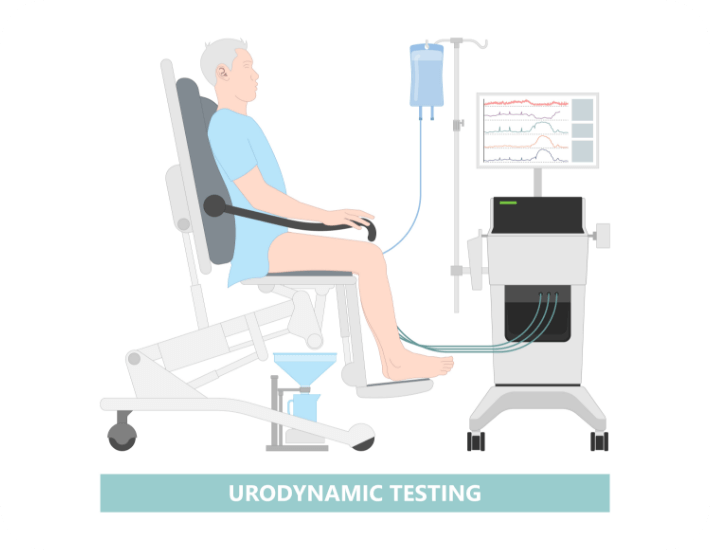Cystoscopy and Urodynamics
Cystoscopy and Urodynamics (with and without fluoroscopy)
Cystoscopy and urodynamics are essential diagnostic tools used to evaluate the urinary system. Both procedures play unique roles in diagnosing and managing various urological conditions. This guide aims to provide a comprehensive overview of cystoscopy and urodynamics, with and without fluoroscopy, to help you better understand their significance in optimising your urological health.
Flexible Cystoscopy: A Window into the Bladder
Cystoscopy is a diagnostic procedure that involves the insertion of a thin, flexible tube with a light and camera (cystoscope) into the urethra and up into the bladder. This procedure allows for a direct visualization of the bladder lining and urethra. Cystoscopy is performed for various reasons:
- Diagnosis of Bladder Conditions: Identifying issues such as bladder stones, tumours, or inflammation.
- Evaluation of Urinary Symptoms: Investigating the cause of recurrent urinary tract infections (UTIs), blood in urine, or urinary incontinence.
- Treatment Guidance: Assisting in the removal of small bladder tumours or stones and guiding certain urological treatments.

Flexible Cystoscopy Procedure
During cystoscopy, the flexible cystoscope is gently inserted through the urethra into the bladder. The urologist examines the bladder lining and urethra in real-time, looking for abnormalities or signs of disease. The procedure is typically well-tolerated.
Urodynamics Without Fluoroscopy: A Holistic Assessment of Bladder Function
Urodynamics is a set of diagnostic tests used to evaluate how well the bladder, sphincters, and urethra store and release urine. Without fluoroscopy, urodynamics includes:
- Cystometry: Assessing bladder pressure during filling and emptying.
- Uroflowmetry: Measuring the rate of urine flow during voiding.
- Post-Void Residual Measurement: Determining the amount of urine left in the bladder after voiding.
- Pressure Flow Study: Evaluating coordination between bladder contraction and urethral relaxation during voiding.

Urodynamics With Fluoroscopy: A Real-Time Visual Insight into Bladder Dynamics
Adding fluoroscopy to urodynamics involves real-time X-ray imaging. This enhances the assessment by providing dynamic visualization of the urinary tract, allowing for a more detailed evaluation of urethral function, detection of anatomical abnormalities, and assessment of bladder and urethral dynamics during the voiding process.
Why Cystoscopy and Urodynamics?
These procedures are recommended for various reasons:
- Persistent Urinary Symptoms: Unexplained issues such as incontinence, frequent urination, or difficulty emptying the bladder.
- Pre-Surgery Evaluation: Essential before certain urological procedures.
- Monitoring Treatment Effectiveness: Assessing the impact of ongoing treatments for bladder dysfunction.
- Diagnosis of Bladder Conditions: Identifying and treating various bladder disorders.
Patient Experience:
Both cystoscopy and urodynamics are generally well-tolerated. Cystoscopy may cause mild discomfort, while urodynamics involve minimal discomfort during bladder filling.